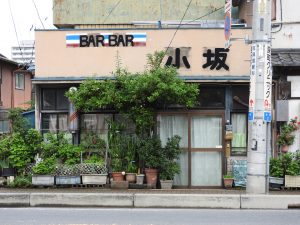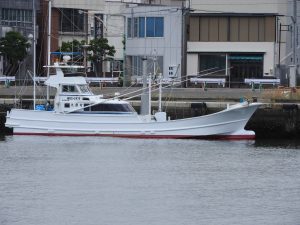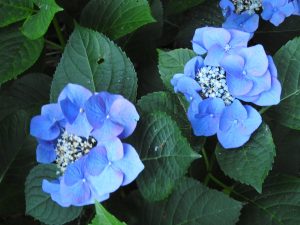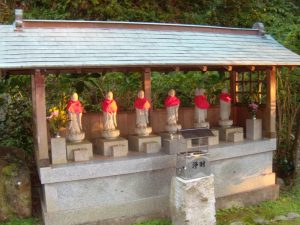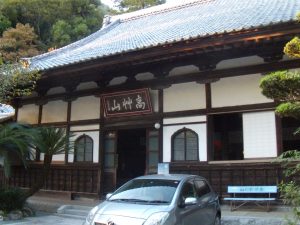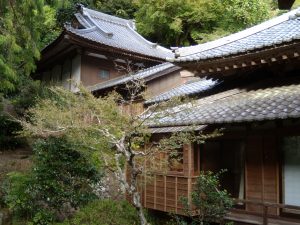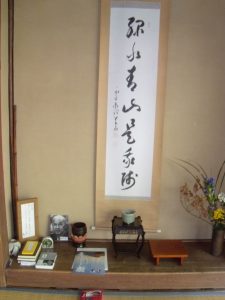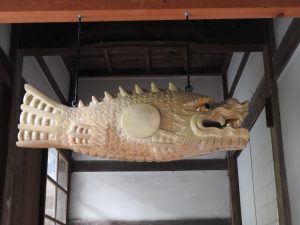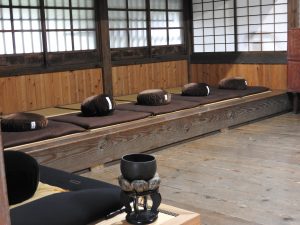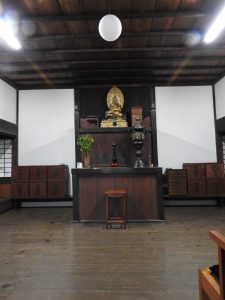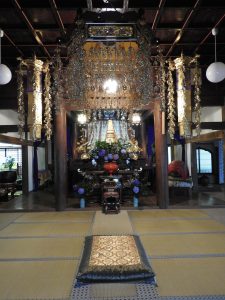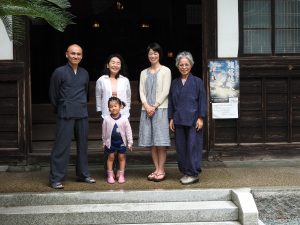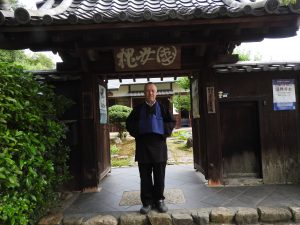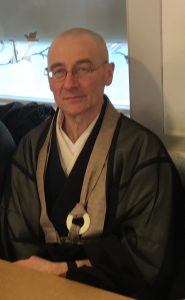Rinsoin Temple is located in Yaizu city, Shizuoka Prefecture Japan and is the original home temple of Shunryu Suzuki Roshi who founded San Francisco Zen Center in 1962.
The trip from Kyoto to Rinsoin temple takes approximately 4 hours. The shinkansen bound for Tokyo passes through Shizuoka city. From Shizuoka one must transfer to a local train to Yaizu. It is three stops to Yaizu and takes about 15 minutes. From Yaizu station it is another15 minutes by taxi up the winding road to Rinsoin. The mountain that Rinsoin is located on looms tall behind the town of Yaizu.
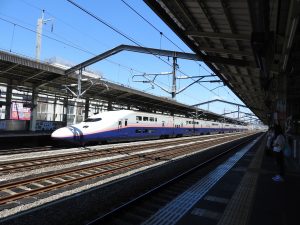
Yaizu is a delightful rather run down small town. With the exception of the ocean nearby, it is somewhat reminiscent of mid west America. There are vibrant businesses and small restaurants and bars mixed in with abandoned buildings and overgrown areas.
Yaizu is spread out length ways along the oceanfront. There is a working port with many ocean going fishing vessels but no tour boats visible at all.
The harbor is definitely not meant to be a tourist attraction. There are no trendy expensive places overlooking the bay but rather down to earth shops and ship maintaining enterprises. Walking along the street next to the harbor I saw this little Albacore fishing boat. These little boats go out on the open sea for days at a time.
In addition to commercial fishing, the Shizuoka area is known for large scale tea agriculture. From the shinkansen one may see many fields of tea plants dotting the hillsides and valleys.
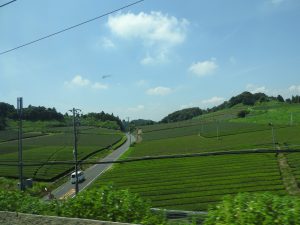 On the drive out of Yaizu one passes by smaller, more human scale fields that are planted in tea. The raw leaf of the tea plant does not taste particularly noteworthy. To transform the raw leaves into green tea it is necessary to bruise the leaves and then steam them to draw out the subtle flavors. The steam also removes the acidity from the leaves. Though black tea comes from the same tea plant it is put through a completely different process of curing. When the fresh tealeaves are harvested from the plant there are two cuttings. The primary harvesting produces the most premium tea.
On the drive out of Yaizu one passes by smaller, more human scale fields that are planted in tea. The raw leaf of the tea plant does not taste particularly noteworthy. To transform the raw leaves into green tea it is necessary to bruise the leaves and then steam them to draw out the subtle flavors. The steam also removes the acidity from the leaves. Though black tea comes from the same tea plant it is put through a completely different process of curing. When the fresh tealeaves are harvested from the plant there are two cuttings. The primary harvesting produces the most premium tea. 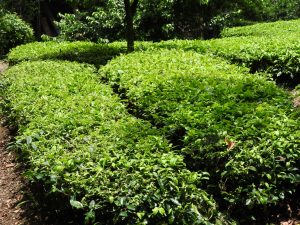 On the outskirts of Yaizu the narrow road begins winding up the mountain named Takai Kusa Yama or Tall Black Mountain. As it approaches Rinsoin, a large cemetery begins. This cemetery is well maintained and continues upwards in the valley and around the back of Rinsoin.
On the outskirts of Yaizu the narrow road begins winding up the mountain named Takai Kusa Yama or Tall Black Mountain. As it approaches Rinsoin, a large cemetery begins. This cemetery is well maintained and continues upwards in the valley and around the back of Rinsoin. This graveyard stretches up to where the mountain becomes so steep that it cannot go any further. From the mountain heights above the cemetery there is a beautiful view stretching down the valley to the ocean.
This graveyard stretches up to where the mountain becomes so steep that it cannot go any further. From the mountain heights above the cemetery there is a beautiful view stretching down the valley to the ocean.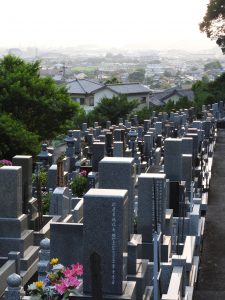 Along the driveway approaching the temple grounds are many clusters of beautiful Ajisa flowers (Japanese hydrangia) that have been planted there by Chitosi, the wife of Hoitsu Suzuki Roshi. She is a master sensei of Japanese flower arranging (Ikebana) and she has several long-term Ikebana students in Yaizu.
Along the driveway approaching the temple grounds are many clusters of beautiful Ajisa flowers (Japanese hydrangia) that have been planted there by Chitosi, the wife of Hoitsu Suzuki Roshi. She is a master sensei of Japanese flower arranging (Ikebana) and she has several long-term Ikebana students in Yaizu.
She creates several works a week and these beautiful arrangements adorn the entry to Rinsoin. Chitosi san is a very wise woman and she once explained to me about her duties. She said, “no mater what, a temple wife must always be with open arms” to visitors.
When Shunryu Suzuki Roshi moved to America and passed control of Rinsoin to his son and Dharma heir, Hoitsu was only 25 years old and his wife Chitosi was a mere 20. By tradition this is an exceedingly young age for a priest to be entrusted with the management and responsibility of a temple. Usually a priest must be 50 years of age before accepting the responsibility for running a temple, especially a temple so large as Rinsoin.
Rinosin was once a Tendai temple before changing to Soto-shu.
Rinsoin is such a large temple complex that there are old buildings that are seldom used.
Below is the small altar in the guest quarters.
Wooden fish outside the Sodo (Zendo) hall which is struck with a wooden mallet to signal time for Zazen .
There are 14 seats in the Sodo hall.
Altar in the Sodo.
Main altar in the Butsuden. The hall can seat several hundred people.
From left to right, Sungo, Marumi, Kumi and Chitosi in front is Chitosi’s little granddaughter.
